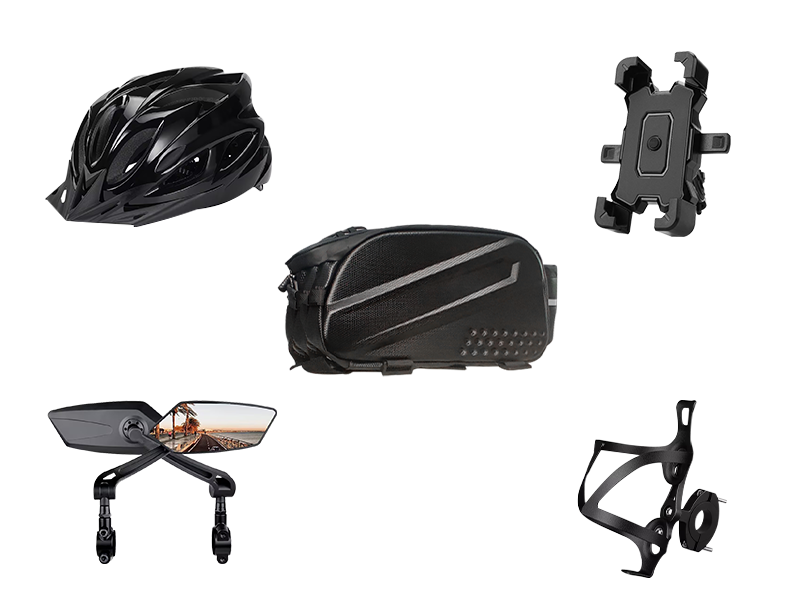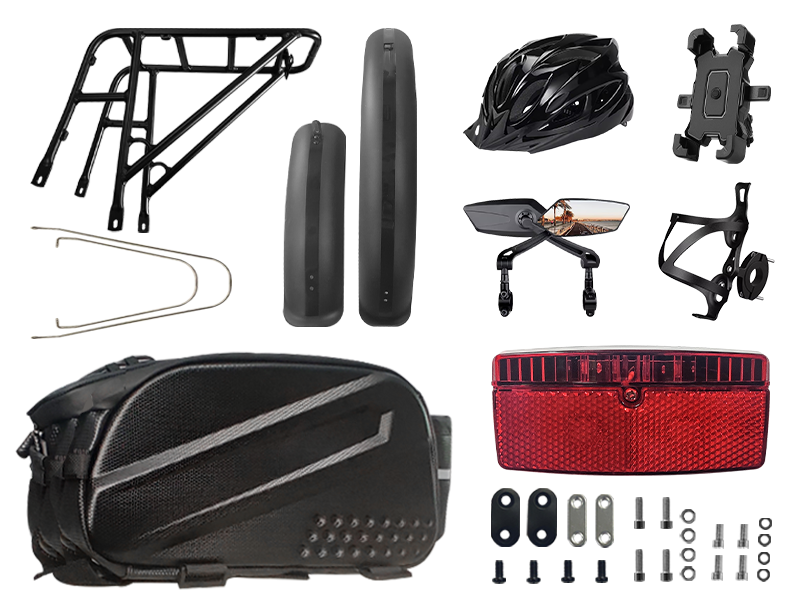Make Your eBike Rides More Comfortable: Tips and Upgrades for a Smooth Ride
JAN 19, 2025
Riding an electric bike (eBike) is one of the most enjoyable and eco-friendly ways to commute or explore your surroundings. Whether you’re cruising through the city or embarking on a countryside adventure, comfort is key to enhancing your riding experience. In this blog post, we’ll explore some of the best tips and upgrades to make your eBike rides smoother and more comfortable.
1. Upgrade Your Saddle
The saddle is one of the most important components when it comes to comfort. If you're planning on riding for extended periods, an uncomfortable saddle can quickly turn your eBike ride into a painful experience. Look for a seat designed for long rides, with extra padding and ergonomic design. Some high-quality eBike saddles even come with suspension for added comfort over rough terrain. Remember, it’s all about finding a seat that supports your posture while keeping pressure off sensitive areas.
2. Adjust the Handlebar Height
Proper handlebar height can make a huge difference in the comfort of your ride. If your handlebars are too low or too high, you might experience discomfort in your back, neck, or wrists. A simple adjustment can help you find a natural, relaxed riding position that reduces strain on your body. Many eBikes allow for handlebar height adjustments, so take the time to experiment until you find the perfect fit.
3. Choose the Right Tires
Tire choice is crucial for both comfort and performance. Wider tires with a lower pressure setting are ideal for absorbing shocks and bumps, especially if you plan to ride on rough roads or trails. If you primarily ride on smooth, paved surfaces, narrower tires will provide better speed and efficiency. Make sure to select high-quality tires designed specifically for eBikes, as they can handle the added weight and power more effectively.
4. Install a Suspension System
Suspension systems are excellent for smoothing out bumpy rides and reducing the impact on your body. Most eBikes come with front suspension, but you can also upgrade to a full suspension system (front and rear) for maximum comfort on uneven terrain. A good suspension will help absorb shocks, making your ride feel much softer and reducing the strain on your hands, wrists, and back.
5. Consider a Throttle Control
Throttle control is a convenient feature that can improve your overall riding experience. With a throttle, you can control the level of assist without needing to pedal constantly. This can be especially helpful when riding on hills, when you’re tired, or when you simply want to take a break. Some eBikes offer adjustable throttle settings, so you can choose the level of power assistance that feels most comfortable for you.
6. Upgrade to Ergonomic Grips
Hand fatigue is common on longer rides, especially if your grips aren’t comfortable. Ergonomic grips are designed to reduce pressure points and improve the overall feel of the handlebars. They are often made from materials like foam or gel, which absorb vibrations and allow for a more comfortable grip. For even more comfort, consider grips with extra padding or those that can be customized to fit your hands perfectly.
7. Dress for Comfort
What you wear plays a big role in how comfortable you feel on your eBike. Wear clothing that’s breathable, moisture-wicking, and designed for cycling. Avoid clothes that restrict movement or cause discomfort, and make sure you’re dressed in layers if you're riding in cooler weather. Proper footwear is also important—opt for shoes with a sturdy sole that provide support while pedaling.
8. Stay Hydrated
Long rides can be draining, and dehydration can make things worse. Always carry water with you, especially on extended rides. Some eBikes come with built-in water bottle holders, but if yours doesn’t, you can easily attach one yourself. Staying hydrated will help keep you alert, energized, and comfortable throughout your ride.
9. Adjust Pedal Position
If you’re experiencing discomfort while pedaling, check the position of your pedals. Adjusting the angle or length of your pedals can have a significant impact on your comfort, especially during long rides. Be sure to choose pedals that suit your riding style and fit well with your feet, as this can help minimize strain on your knees and ankles.
10. Regular Maintenance for Optimal Performance
Finally, keeping your eBike in top condition is essential for maintaining a smooth and comfortable ride. Regularly check your tires, brakes, motor, and battery to ensure everything is running efficiently. A well-maintained bike performs better, is more reliable, and can prevent unexpected discomfort or breakdowns during your ride.
By incorporating these tips and upgrades into your eBike setup, you’ll be able to enhance your comfort and make every ride more enjoyable. Whether you're commuting to work or embarking on a weekend adventure, a comfortable eBike is key to making the most of your cycling experience. Happy riding!














